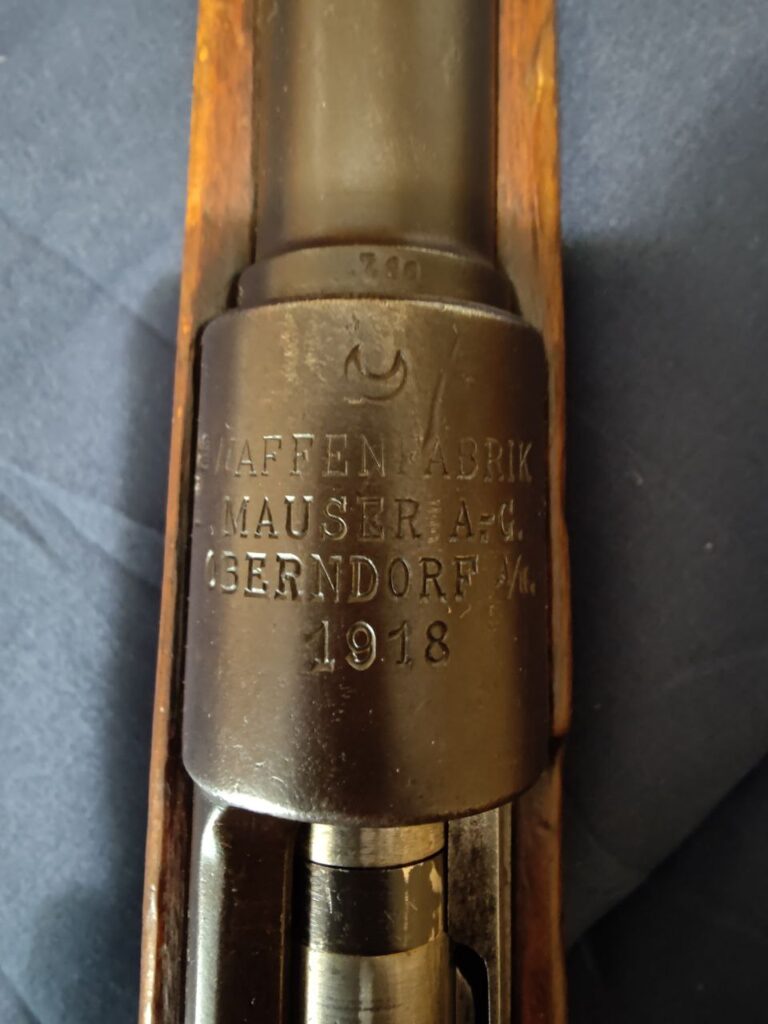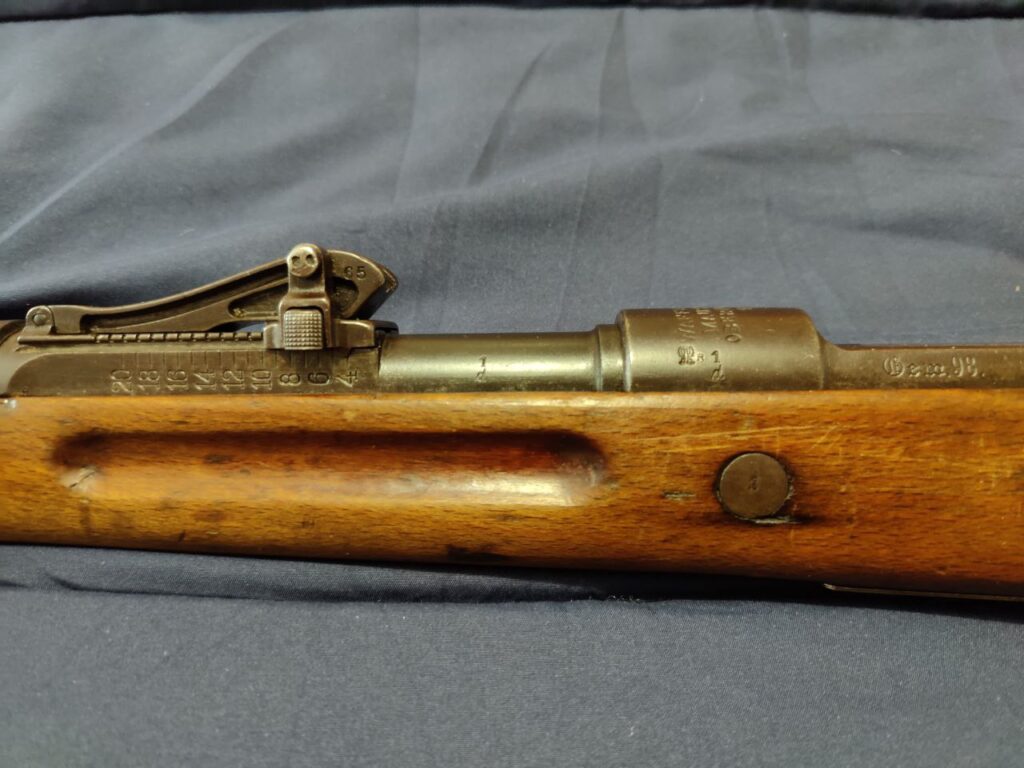On a recent episode of Gun Owners Radio, we briefly discussed the standard long arm of the Ottoman Empire in World War I: the Mauser bolt-action rifle. As I mentioned on the show, the Ottomans used a variety of different patterns of Mauser; when collectors refer to the “Turkish Mauser,” they’re talking about all of them collectively.
The Ottoman Empire’s first pattern was the Model 1887, similar to the Gewehr 71/84 in service with the German Empire at the time. It fed eight rounds of 9.5×60mmR, a black powder cartridge, from an under-barrel tubular magazine. As luck would have it, this was an exceptionally inconvenient time to adopt a new black powder rifle; France had recently begun production of its first smokeless powder composition, with the rest of Europe close behind. After taking delivery of roughly half of its more than half-million-piece order, the Ottomans switched to the Model 1890.
The Model 1890 was similar to the Belgian, Spanish, and Argentine Mausers. It fed five rounds of 7.65×53 “Argentine,” a full-power smokeless cartridge, from a 5-round single-stack box magazine protruding conspicuously below the action. Waffenfabrik Mauser filled out the rest of the 1887 order with 1890s. The Ottoman Empire placed its next order for the 1893 pattern, very similar to what the Spanish defenders would famously use to great effect against U.S. troops in the Spanish-American War of 1898. Like its predecessor, the ’93 was chambered in 7.65mm.
The last pattern of rifle the Ottomans ordered before the war was the Model 1903. As a derivative of Mauser’s Model 1898, it is a highly refined design with an extremely strong and exceptionally safe action. In a cavalry carbine configuration, these are referred to as Model 1908s. Although delivered to the Ottoman Empire in 7.65mm, these were converted to the more widely available 7.92×57 (“8mm”) by the Republic of Turkey between the wars.
Which one of these four patterns is my rifle? None of the above, actually. During World War I, the Ottoman Empire’s urgent need for arms drove it to procure virtually anything that was available, particularly from the German Empire. Large numbers of surplus Gewehr 88 “commission rifles” and new-production Gewehr 98s were shipped to the Ottomans; my rifle is an example of the latter. It rolled off the line at the Waffenfabrik Mauser factory in Oberndorf am Neckar, Baden-Württemberg, in 1918.
This one is identical to the standard configuration as fielded by the Imperial German Army, save for the Turkish crescent crest featuring prominently on the top of the receiver. Most examples left in inventory after the war were refurbished or rebuilt and therefore bear different markings, but mine is exactly as it would have been when it left the factory 105 years ago. My rifle is in excellent condition; the bore is clean, the rifling is sharp, no rust is outwardly present. Some wear and patina, as well as the remnant of a rack number prominently painted on the stock, give it a great deal of character. The machining quality is nothing short of superb—I’ve felt rougher bolts and safeties on modern rifles.
As far as features, the 1898 pattern—my Ottoman Gewehr 98 included—is well-equipped. The Langevisier rear sight is adjustable in 50-meter increments from 400 to 2,000 meters, with a simple but clever mechanical design. Squeezing the checkered buttons on both sides allows the slider to move freely, but when locked in place, only one protrudes at a time. To increase or decrease range by 50 meters at a time, the shooter can press only the protruding button and push or pull on the slider without the risk of it fully unlocking. These sight adjustments are valid both with and without a bayonet, as Paul Mauser’s bayonet mounting system (unlike that on the Mosin) does not impinge on the barrel. That zero won’t change after prolonged firing, either—the stock is inletted to allow for thermal expansion of the barrel without altering its point of impact.
As I mentioned before, earlier 7.65mm Turkish Mausers still in inventory after WWI were rechambered for 8mm. Many militaries, including that of the Republic of Turkey, rebuilt leftover small arms between the wars to keep them up to date and in proper working order. Mine is less historic than the older pre-WWI models and probably less interesting than a later domestically produced Model 1938. Because it was delivered to the Ottoman Empire as a bone-stock G98, however, it is arguably the best of both worlds—a perfect example of the more desirable German rifle, with the added collectability of its Turkish provenance.
This article was originally posted on from San Diego County Gun Owners











